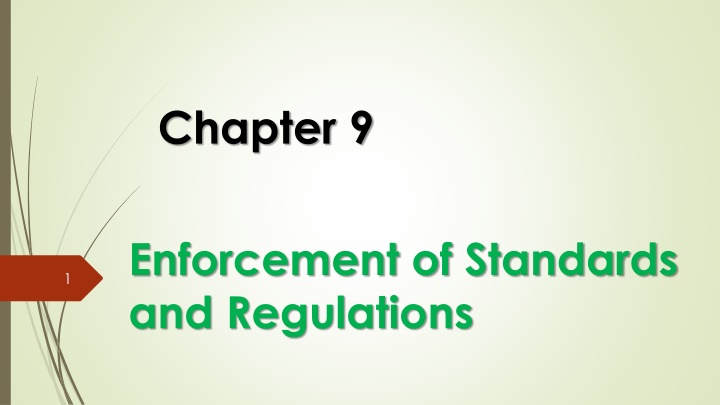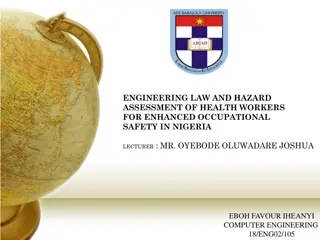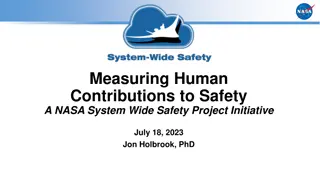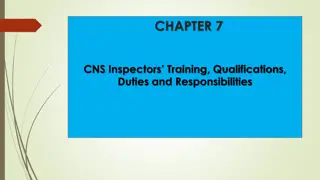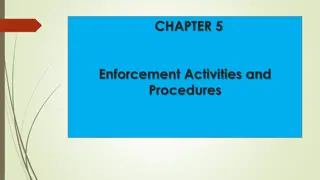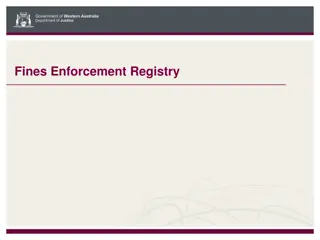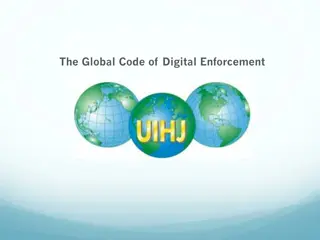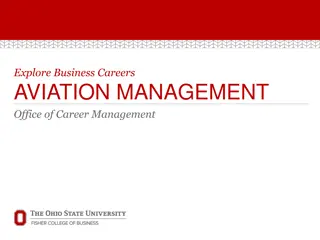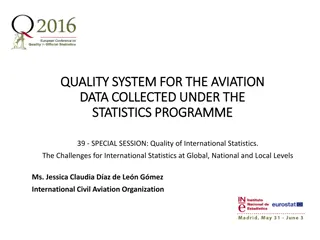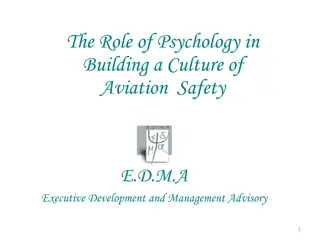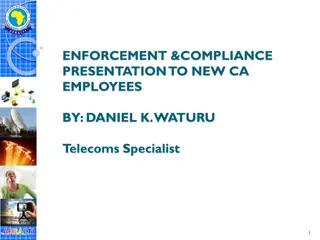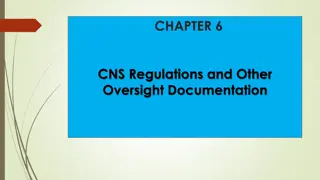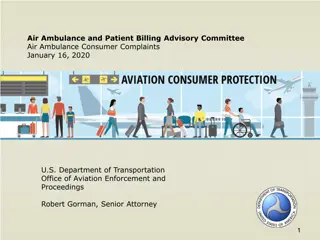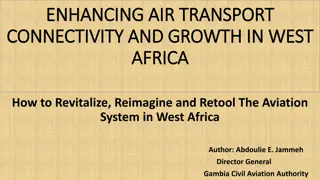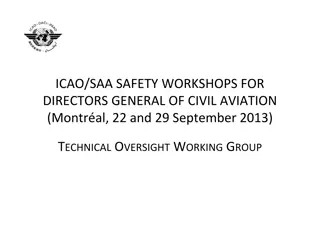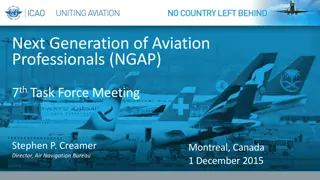Enforcement of Aviation Safety Regulations: Policies and Procedures
Industry actions should resolve safety issues; enforcement by CAA if needed. CAA empowered to take actions like limitations, revocations, penalties. Enforcement ensures compliance with laws, regulations, and standards. Clear policies for effective, fair, and transparent enforcement. Aim is to maintain aviation safety through equitable means. Focus on trust, confidence, and world-class air safety environment. Policy includes range of options for compliance.
Download Presentation

Please find below an Image/Link to download the presentation.
The content on the website is provided AS IS for your information and personal use only. It may not be sold, licensed, or shared on other websites without obtaining consent from the author.If you encounter any issues during the download, it is possible that the publisher has removed the file from their server.
You are allowed to download the files provided on this website for personal or commercial use, subject to the condition that they are used lawfully. All files are the property of their respective owners.
The content on the website is provided AS IS for your information and personal use only. It may not be sold, licensed, or shared on other websites without obtaining consent from the author.
E N D
Presentation Transcript
Chapter 9 Enforcement of Standards and Regulations 1
Overview 2 Effective and timely actions taken by the industry should result in the effective resolution of safety issues. However, in the absence of a resolution, the CAA should take the appropriate enforcement measures, such as: the imposition of limitations, the suspension or revocation of certificates/licences/approvals, or; the imposition of financial penalties
Enforcement 3 Enforcement is the action necessary when there is evidence of violation and lack of compliance. Enforcement requires legal or administrative action. It is necessitated by violations of applicable legislation, regulations, procedures and standards on which an ANSP is authorized to provide ANS. There is no need for enforcement when compliance exists. The CAA should be empowered by the State s primary legislation to take these enforcement measures, which should be commensurate with the safety risks caused by non-compliances or violations. If, after careful review of all circumstances involved and coordination within the CAA, there is a need to suspend or revoke the licence/rating/certificate/approval holder s privileges, the CAA should officially inform the licence/rating/certificate/approval holder in writing, summarizing both the proposed action and the reasons for said action.
CAA enforcement Policy 4 Based on the State s legislation and procedures, the CAA should establish and implement clear, comprehensive and detailed enforcement policies and procedures for use by its staff. Such policies and procedures should enable an effective, proportional, gradual and consistent approach to enforcement within the CAA. The aim of the Enforcement Policy is to promote compliance with aviation safety regulations through enforcement functions in an equitable, fair and transparent manner. The enforcement policy ensures that the decisions or decision making processes are: effective, fair, timely, consistent, and; properly documented in accordance with the dictates of the regulations.
CAA enforcement Policy 5 Equally, the Enforcement Policy is meant to enable the aviation community to provide a world-class air safety environment, which has public trust and confidence. To achieve trust and confidence from the aviation industry and the members of the public including air commuters, CAA will take appropriate and timely action to curb the intentional breach or neglect of the statutory provisions. The CAA's enforcement policy determines the way it uses its powers to regulate the aviation industry. With limited resources, the Authority shall ensure that it gives proper focus to the exercise of these powers and put adequate measures in place to give effect to the rule of law.
CAA enforcement Policy 6 The policy will outline a range of enforcement options intended to effectively secure compliance with primary law and regulations depending on the circumstances. These options include: Oral counselling; Letter of correction; Warning Letter; Issuance of aviation infringement notices Requiring licence, certificate or authorization holders to undergo remedial training and be re-tested; or examined; Taking administrative action to vary, suspend or cancel a licence, certificate or authorization. Referring the matter to the Director of Public Prosecutions (or relevant prosecutorial body) for criminal prosecution of the licence, certificate or authorization holder under the Civil Aviation Act and the regulations made thereunder.
CAA enforcement Policy 7 If the licence/rating/certificate/approval holder does not correct the deficiency within the established deadlines, the CAA should take appropriate and progressive enforcement measures to ensure prompt correction of deficiencies.
Enforcement procedures 8 This involves the following; 1. Completing the violation reporting form 2. Carrying out enforcement investigation 3. Determining enforcement action
Enforcement Process 9 The following steps give an overview of the enforcement processes that are followed during a typical enforcement action. The ATM & SAR inspector: - identifies the alleged violated statutory and regulatory provision, determines enforceability and applicability; prepares a risk statement, classifies the violation according to level of seriousness and safety threat it may pose or cause; administers oral counseling in a case where the violation possesses minimum - low safety risk; issues a detection notice/ infringement notice and seizes evidence in all other cases; plans and coordinates the investigation, where the violation had not exceeded a statutory time limit or related to criminal activity; (No investigation) proves the existence of a violation through acquired evidence; determines the appropriate enforcement action using the enforcement decision tool (EDT), recommends type of sanction; and supports the legal department through the head of inspectorate for legal action for cases that did and can jeopardize safety.
The Enforcement determination Tool (EDT) 10 The EDT is a worksheet with systematically arranged guidelines to aid ATM & SAR inspectors in determining and classifying violations and the required enforcement action. ATM & SAR inspectors provide an orderly and logical statement of the facts necessary to establish each element of each regulation believed to have been violated and the related investigative action that established that fact. Support for each factual statement should be done by referring to an item of proof. The Enforcement Decision Tool (EDT) is used for this purpose.
